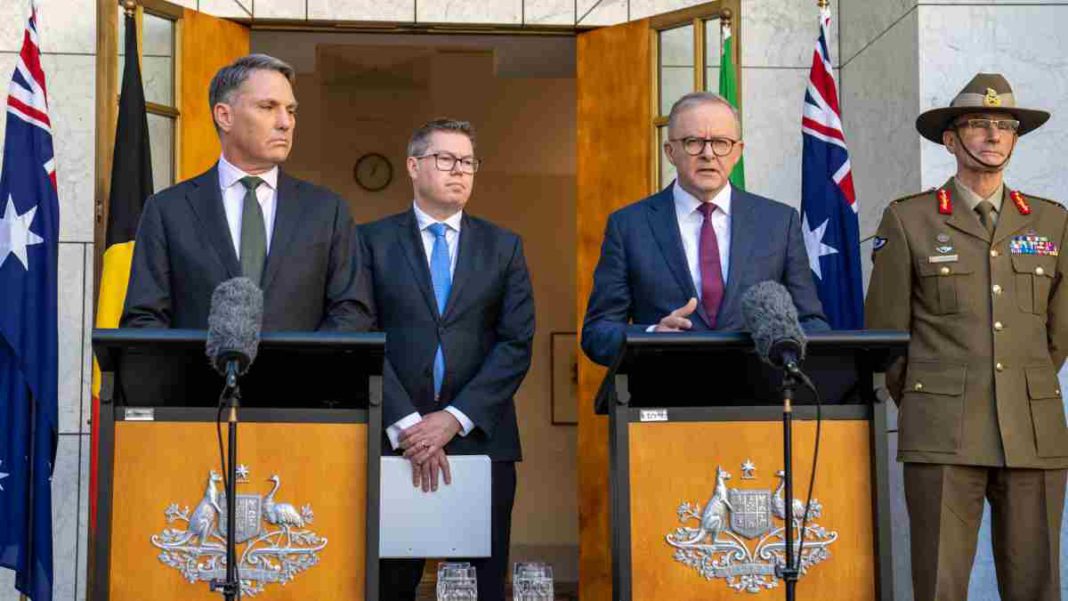AUSTRALIA: The Australian government will focus on diplomacy, local production of guided weapons, and long-range precision strikes, according to a report released Monday recommending the nation’s greatest defence reforms since World War Two.
The review stated that the U.S. was no longer the “unipolar leader of the Indo-Pacific,” the region was being defined by fierce competition between the United States and China, and the major power competition had “potential for conflict.”
As per the review, the nation’s northern bases will be prioritised in an effort to fend off enemies and safeguard trade lines and communications.
Prime Minister Anthony Albanese hailed the review as “the most important work since the Second World War.”
“It demonstrates a world where challenges to our national security are always evolving. We must uphold old assumptions. We must build strength in our security by seeking to shape the future rather than waiting for the future to shape us,” he stated.
The review stated that China is engaging in strategic competition in Australia’s immediate neighbourhood, is carrying out its largest buildup since World War Two, and needs to be clearer about its aims.
The classified study that was made public on Monday stated Australia should “avoid the highest level of strategic risk we now face as a nation: the prospect of major conflict in the region.”
It said that an invasion in the “missile age” was unnecessary to address Australia’s military danger.
According to the statement, Australia and the United States would cooperate more closely in terms of military planning on both sides, joint patrols, and rotations of American forces, including submarines. The review stated that Australia must increase its defence cooperation with countries in the Pacific, Southeast Asia, Japan, and India.
With A$19 billion in funding for the review’s recommendations—including A$7.8 billion redirected from abandoned projects—defence spending will rise over the next ten years but remain stable over the following four.
Defence Minister Richard Marles stated in the government’s response to the study that Australia must be able to defend its territories and the local area, thwart any hostile attempt to project power through its northern approaches and safeguard commerce routes and communications.
The review found that Australia’s defence force was “not fit for purpose,” he stated.
He added, “We aim to change the calculus so no potential aggressor can ever conclude that the benefits of conflict outweigh the risks.”
The evaluation confirmed that the AUKUS nuclear-powered submarine programme is a priority for Australia’s deterrence capacity.
The review noted that guided and long-range strike weapons were also “fundamental to the Australian Defence Force’s ability to hold an adversary at risk” and that domestic manufacture of these weapons would be established. It added that procurement times for these weapons would be sped up.
According to the review, Australia will enhance its northern bases and ports immediately, and the nation needs to fix its problems with fuel storage. The government announced that it would look into utilising the petroleum and civil mineral infrastructure in northern and central Australia. Additionally, it urged the creation of space and cyberdefense capabilities.
Among the areas it listed as crucial were undersea warfare, which included the use of drones for strike and surveillance, better targeting, long-range strikes, maritime operations for local sea control and sea denial, air and missile defence, expeditionary theatre logistics, and northern bases for logistical support and deterrence.
The study noted that Australia’s military interest region extends from the northeast Indian Ocean through maritime Southeast Asia and into the Pacific.
The report stated that the navy needs more small ships with long-range attack weaponry, with the specifics being chosen this year following an independent analysis. The administration reaffirmed its dedication to naval shipbuilding.
The review suggests developing the Ghost Bat uncrewed aircraft with the United States and equipping Australia’s F-35A and F/A-18F fighter jets with long-range anti-ship missiles.
It exhorted the administration to consider using an already-in-place integrated air and missile defence system, which would be easier to acquire.
The review highlighted three phases to reconfigure military capabilities, with immediate objectives including adding longer-range weapons to existing platforms over the next two years, speeding up new capabilities from 2026 to 2030, and creating a “future integrated force” starting in 2031.
Also Read: Indian Navy to Boost Firepower with $2.5 Billion Order for BrahMos Cruise Missiles



